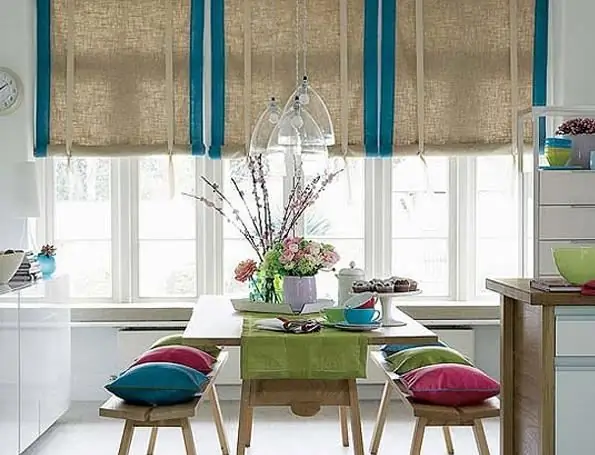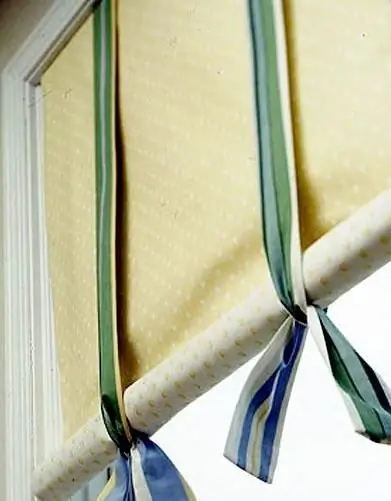Today, roller blinds are widely available for sale, but their cost is quite high compared to the price of the materials that are needed for their manufacture. Can it be easier and cheaper to make your own roller blinds?

Roller blinds are very functional and have many other advantages, including extremely easy to manufacture.
To sew such curtains, you will need two cuts of fabric to fit the window, threads, two wooden bars (square in section, about 2 by 2 cm or 3 by 3 cm, as well as round, about 2 cm in diameter for weighting), ribbons or cords for fixing, furniture stapler.
Before purchasing curtain materials, measure the window or frame that you intend to cover with the roller blind. The width of the fabric should be about 5 cm more than the width of the frame, the length should be 10-15 cm more than the length of the frame. The length of each bar should be equal to the width of the frame.
1. For a roller blind, it is better to take two pieces of fabric, since the curtain rolls up inside out, which is not very nice. That is why we sew the roller blind in two layers like a bag - we sew it on three sides, and we sew the upper edge of the "bag".
2. In the "bag" we put a round block on which the curtain will be wound, and sew it up to get a narrow pocket with a weighting agent.
3. Wrap the top of the curtain around a second piece of wood and secure the fabric with a furniture stapler.
4. Place two tapes or decorative cords over the top of the curtain, secure each with a furniture clip. To fix the curtain, you just need to wrap it up to the desired height and tie it with ribbons.

5. Fasten the curtain to the window with the screws.
To allow the curtain to be removed and cleaned, attach it to the window with small metal tabs, like a painting. Also a good option is to attach the curtain to a bar using a burdock fastener.
By the way, the fabric for such a front and back side of such a curtain can be chosen in different colors and patterns, but it is important that they are combined with each other. You can also play with the upper part of the curtain, for example, fix it on a classic cornice.






